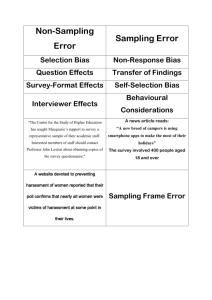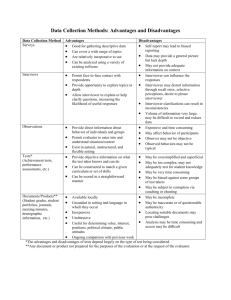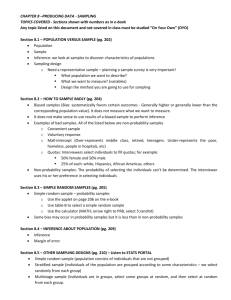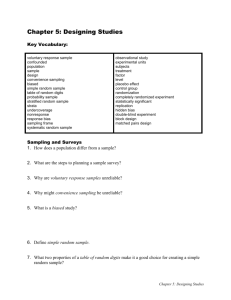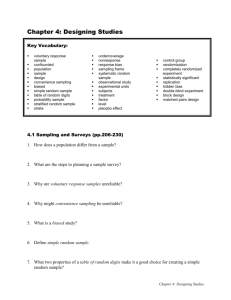Chapter 5.1 notes variable--a characteristic of an individual
advertisement
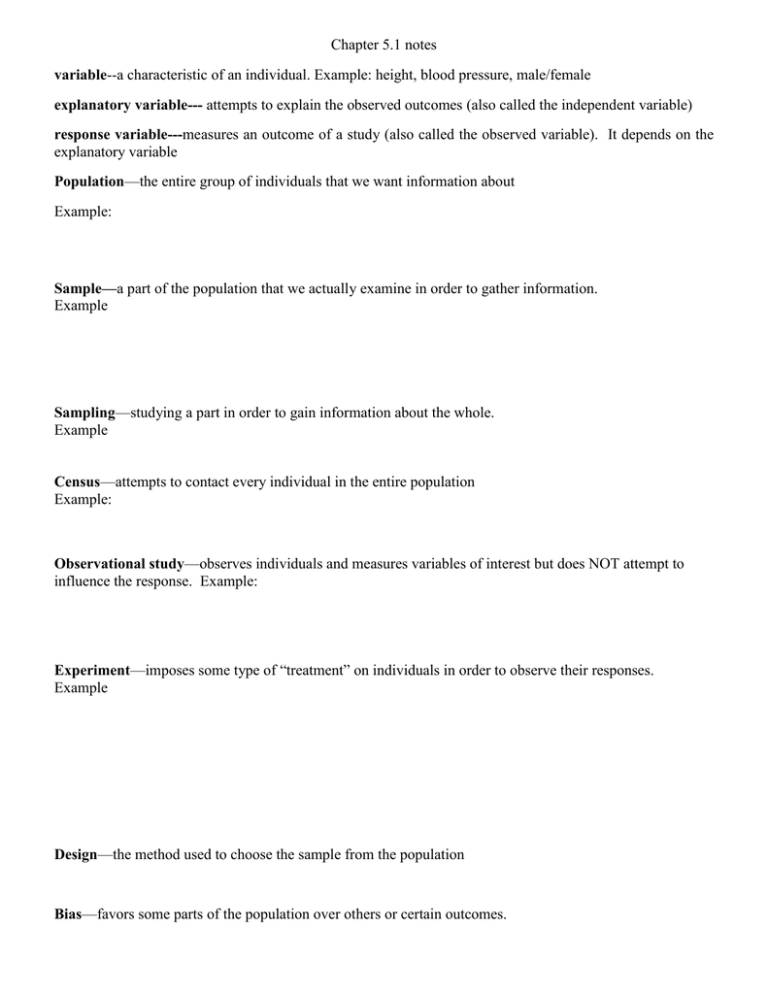
Chapter 5.1 notes variable--a characteristic of an individual. Example: height, blood pressure, male/female explanatory variable--- attempts to explain the observed outcomes (also called the independent variable) response variable---measures an outcome of a study (also called the observed variable). It depends on the explanatory variable Population—the entire group of individuals that we want information about Example: Sample—a part of the population that we actually examine in order to gather information. Example Sampling—studying a part in order to gain information about the whole. Example Census—attempts to contact every individual in the entire population Example: Observational study—observes individuals and measures variables of interest but does NOT attempt to influence the response. Example: Experiment—imposes some type of “treatment” on individuals in order to observe their responses. Example Design—the method used to choose the sample from the population Bias—favors some parts of the population over others or certain outcomes. Voluntary response sample—consists of people who choose themselves by responding to the general appeal. Voluntary responses are biased, since people who have strong opinion, especially negative opinions are the ones most likely to respond. Is a bad sampling method. Example Convenience sampling—The researcher/interviewer chooses the individuals easiest to reach. Is a bad sampling method. Example Simple Random Sample—samples every nth individual. Each individual has an equal chance to be sampled. It is NOT biased. Example: Stratified random sample—first the interviewer divides the population into groups of similar individuals (called strata). Then a random sample of each group is taken. The strata are chosen on facts before the sample is taken. Example: Undercoverage—some groups in the population are left out of the process of choosing the sample Example: Nonresponse—when an individual chosen for the sample cannot be contacted or does not cooperate. Example: Response Bias—the “behavior” of interviewer or respondent makes the survey biased. The respondent may lie when he/she answers. The interviewer may “suggest” how to answer by his/her actions. Example of respondent response bias: Example of interviewer response bias: The wording of questions is the most important influence on the answers given in a sample survey. Confusing or leading questions can introduce bias and affect respondents’ answers. Example: “Do you still smoke cigarettes?” Answer yes or no. If a person has never smoked, how does he/she answer? Other examples: The larger the random sample is, the more accurate the results.
